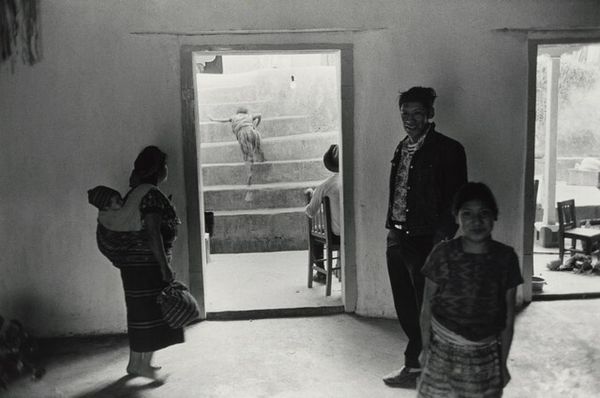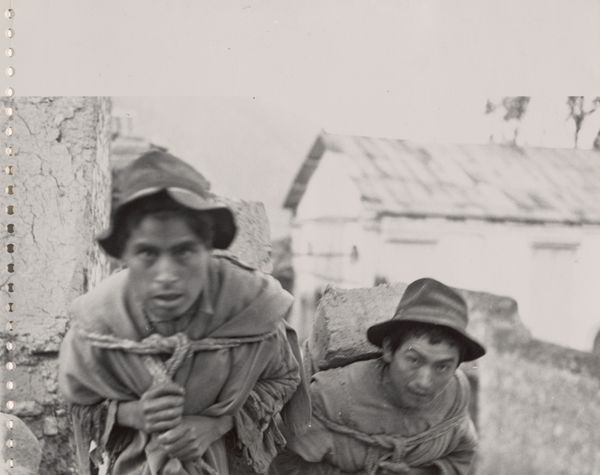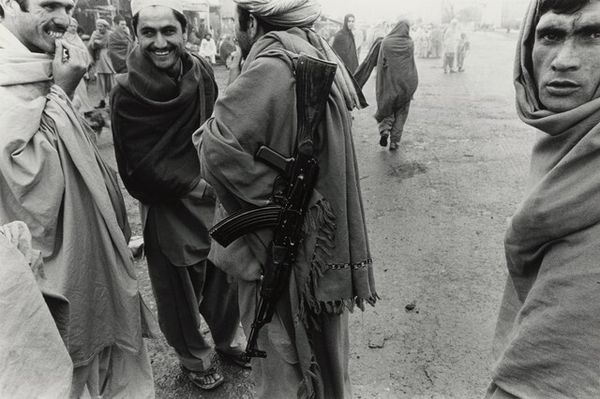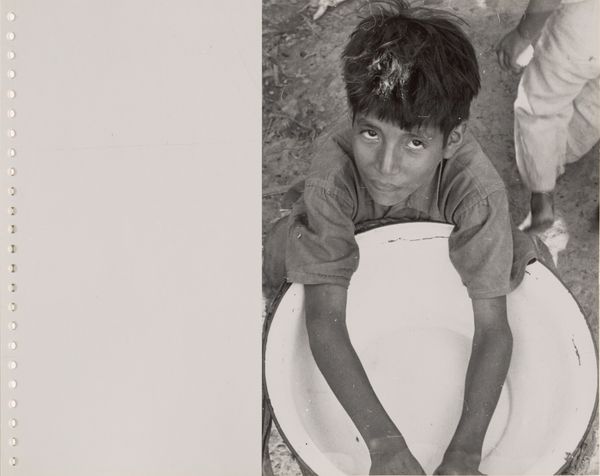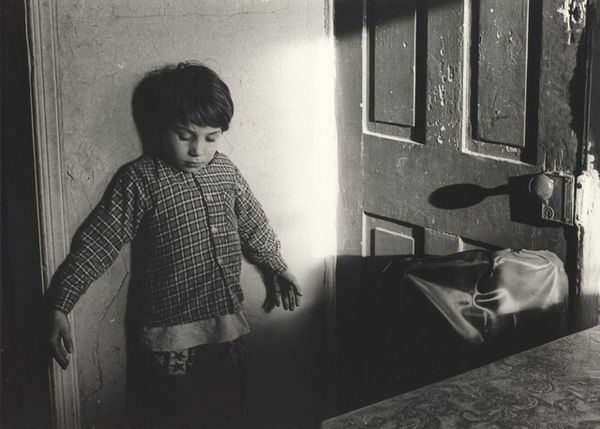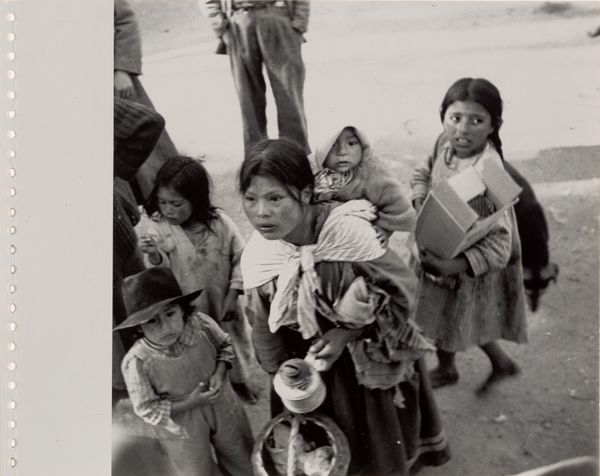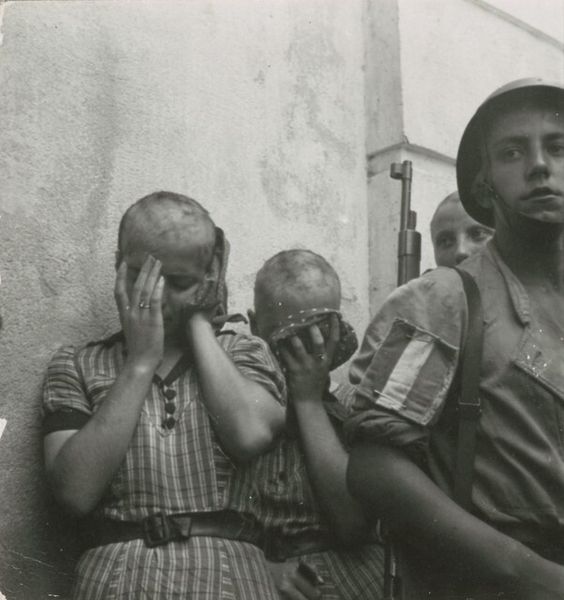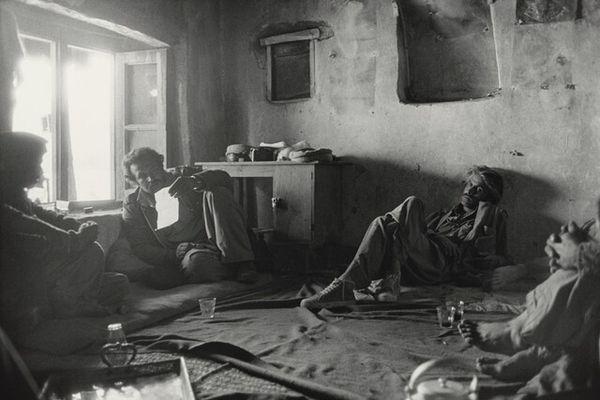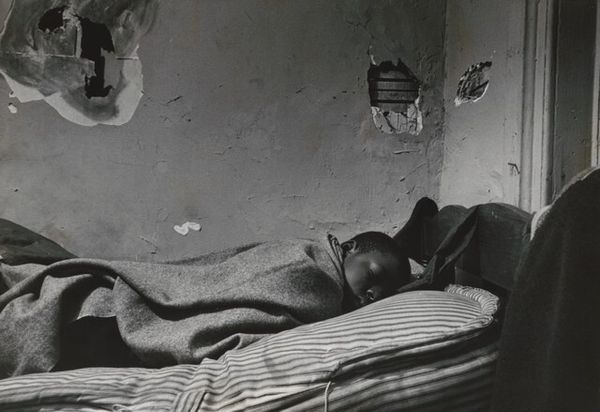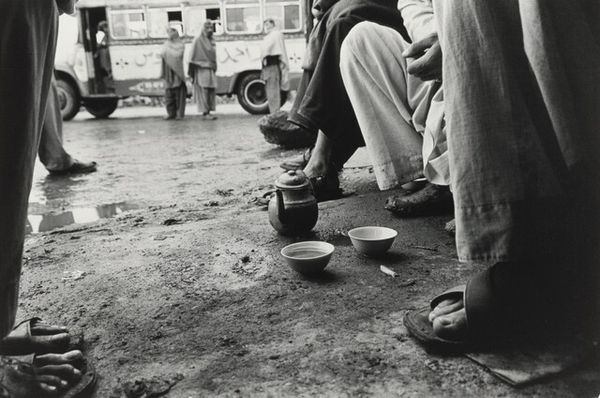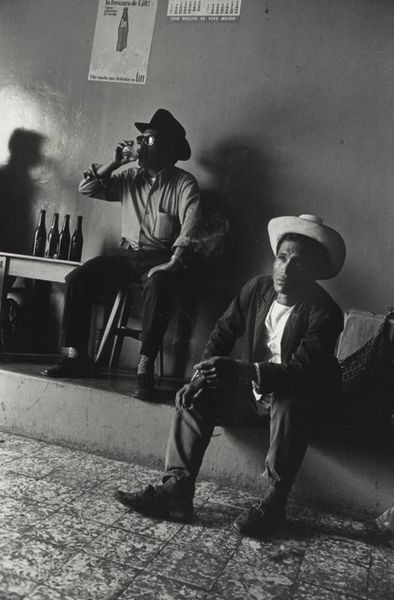
photography, gelatin-silver-print
#
portrait
#
street-photography
#
photography
#
black and white
#
gelatin-silver-print
#
monochrome photography
#
realism
#
monochrome
Dimensions: image: 19 × 28 cm (7 1/2 × 11 in.) sheet: 24.5 × 35 cm (9 5/8 × 13 3/4 in.)
Copyright: National Gallery of Art: CC0 1.0
Editor: This photograph, titled "Oaxaca, Mexico," was taken by Ed Grazda in 1975 and printed as a gelatin silver print. It's a monochrome image of several figures in what appears to be a sparsely decorated room, with what seems to be a kite frame leaning on the wall on the right. There's a man seemingly tossing something to a child, with another seated next to them. I’m immediately struck by the apparent joy on one of the boy's face and the simplicity of the setting. What do you see in this piece? Curator: It is a compelling work. Beyond the surface, let's consider the means of production. A gelatin silver print situates it within a specific history of photographic technology—one of reproducibility and accessibility. Now, looking at the social context, this is 1975, Oaxaca. Consider what materials were available to the subjects for making objects—kites, possibly wares to sell as evinced by the bag and plate. These elements tell us about their lives and constraints. How might their material conditions have shaped the image? Editor: I hadn't thought about it that way. I was just focusing on the people in the photo and how they look like they are just relaxing indoors on break. You mean like considering the actual costs, access to certain raw materials? Curator: Precisely! It's easy to romanticize, but think about the labor involved in constructing that kite frame, potentially out of found or scavenged materials. Even the act of Grazda being there is a production of the image, it’s not a snapshot, but an interaction between subject and the artist. Are those the goods to be sold? Is this how a family earns money, one small object at a time? Thinking materialistically allows us to dig deeper than mere observation of smiling children. What would you want to research more, looking at the materials and the processes involved? Editor: Perhaps digging deeper into the history of kite making in Oaxaca, understanding what the typical materials were and how they were sourced locally. Also, learning more about Grazda's practice to understand if he often captured everyday labors or just a particular glimpse. Curator: Exactly. Thinking of the artwork in context gives us a point of discussion instead of just appreciation.
Comments
No comments
Be the first to comment and join the conversation on the ultimate creative platform.
